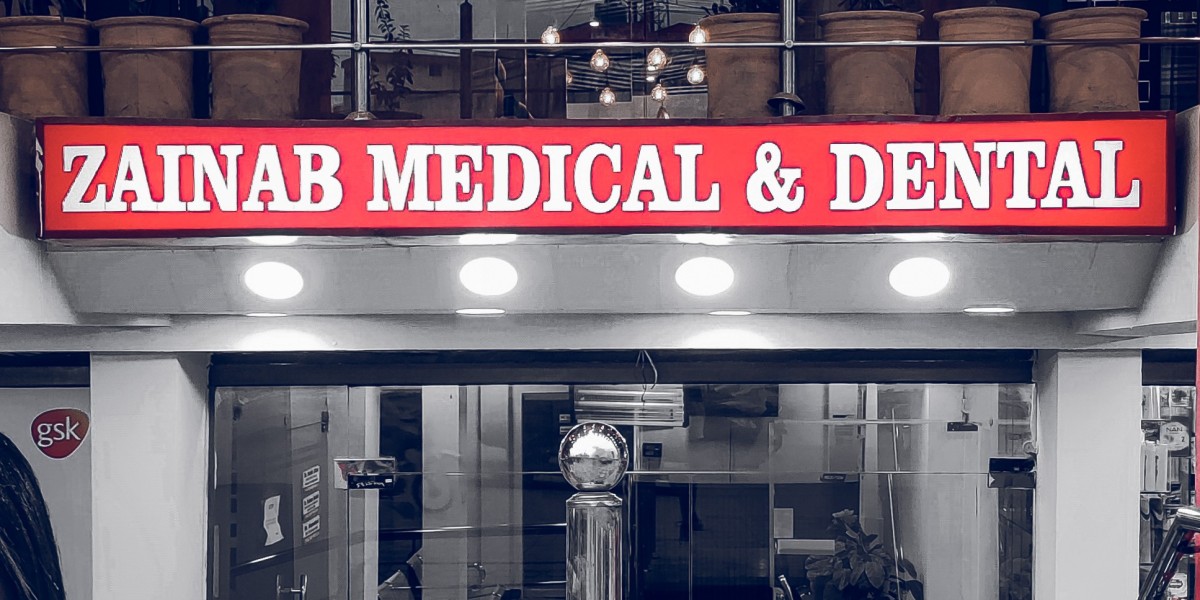Restorative dentistry has become one of the most in-demand branches of modern dental care. Whether you are missing a tooth, struggling with cavities, or dealing with damaged enamel, restorative treatments offer both functional repair and aesthetic enhancement. Many people searching for quality treatments visit a Dental Clinic in Islamabad or nearby areas to explore options like dental fillings, crowns, bridges, implants, and more.
This comprehensive guide will walk you through the essentials of restorative dentistry—what it is, its benefits, the types of treatments available, and what to expect during your visit. You’ll also find interactive FAQs, tables for comparison, and expert insights based on trusted dental practices.
What is Restorative Dentistry?
Restorative dentistry focuses on diagnosing, treating, and repairing problems in your teeth to restore oral health, strength, and appearance. Unlike cosmetic dentistry, which primarily enhances the look of your smile, restorative care addresses functionality first, while also improving aesthetics.
It can include simple procedures like fillings or advanced treatments like dental implants. Restorative care often overlaps with preventive and cosmetic dentistry, creating a holistic approach to oral well-being.
Why Restorative Dentistry Matters
Restores Functionality: Helps you chew, speak, and smile with confidence.
Prevents Complications: Treats decay, cracks, and missing teeth before they worsen.
Enhances Appearance: Modern restorations look natural and blend seamlessly with your smile.
Boosts Confidence: Improves self-esteem by creating a healthier, more attractive smile.
Supports Oral Health: Restorations protect surrounding teeth and prevent bone loss.
Types of Restorative Dentistry Treatments
Here’s a clear overview of common restorative dentistry options:
| Treatment | Purpose | Best For | Longevity (Average) |
|---|---|---|---|
| Dental Fillings | Restore cavities and prevent further decay | Patients with tooth decay | 5–15 years |
| Crowns | Cover and protect damaged or weakened teeth | Cracked, worn, or root canal-treated teeth | 10–15 years |
| Bridges | Replace one or more missing teeth | Gaps with healthy teeth on both sides | 10–15 years |
| Dentures | Full or partial replacement of missing teeth | Multiple or full arch tooth loss | 5–10 years |
| Dental Implants | Permanent replacement of missing teeth | Single or multiple tooth loss | 20+ years |
| Inlays & Onlays | Partial coverage restoration | Large cavities or fractured teeth | 10–30 years |
Step-by-Step: How Restorative Dentistry Works
Initial Consultation
A thorough exam, often with X-rays, to identify problems.
Personalized treatment plan based on your oral condition.
Preparation
Tooth cleaning, decay removal, or shaping of damaged areas.
Local anesthesia ensures a painless experience.
Restoration
Placement of fillings, crowns, bridges, or implants depending on the case.
Follow-Up
Dentists monitor healing and adjustment.
Regular checkups ensure restoration longevity.
Restorative Dentistry vs. Cosmetic Dentistry
| Aspect | Restorative Dentistry | Cosmetic Dentistry |
|---|---|---|
| Primary Goal | Restore function & oral health | Enhance aesthetics |
| Examples | Fillings, crowns, implants | Veneers, whitening, bonding |
| Focus | Health first, appearance second | Appearance first |
| Longevity | Long-term durability | Depends on procedure |
Who Needs Restorative Dentistry?
People with tooth decay or cavities.
Those with cracked, chipped, or fractured teeth.
Patients who have lost one or more teeth.
Individuals experiencing tooth pain or sensitivity.
Anyone looking for long-lasting oral health solutions.
Benefits of Restorative Dentistry for Patients
✔️ Improved chewing and speech
✔️ Stronger bite and better nutrition
✔️ Natural-looking teeth replacements
✔️ Prevention of further oral health issues
✔️ Support for surrounding teeth and jawbone
Interactive FAQs on Restorative Dentistry
Q1. Is restorative dentistry painful?
Most procedures are performed under anesthesia, making them virtually painless. Mild discomfort may occur afterward but is usually manageable with simple care.
Q2. How long does a dental crown last?
With proper oral hygiene and regular checkups, crowns can last 10–15 years or more.
Q3. What is the best option for missing teeth?
Dental implants are considered the gold standard for tooth replacement due to their longevity and natural appearance. However, suitability depends on bone density and health.
Q4. Is restorative dentistry expensive?
Costs vary based on procedure type, materials used, and location. While implants are more expensive upfront, they are often more cost-effective long-term due to durability.
Q5. Can restorative dentistry improve my smile aesthetics too?
Yes. Although functionality is the primary focus, modern restorations like ceramic crowns and tooth-colored fillings look natural and greatly enhance your smile.
Tips for Maintaining Restorations
Brush and floss daily to prevent decay around restorations.
Visit your dentist every 6 months for checkups and cleanings.
Avoid hard foods (like ice or hard candies) to prevent chipping.
Wear a mouthguard if you grind your teeth at night.
Follow dentist’s aftercare instructions closely.
Latest Trends in Restorative Dentistry
Digital Dentistry: 3D scanning and CAD/CAM technology allow same-day crowns.
Biocompatible Materials: Non-toxic, natural-looking materials improve patient safety.
Minimally Invasive Techniques: Preserve more of the natural tooth structure.
Implant Innovations: Immediate-load implants and improved bone grafting techniques.
AI in Dentistry: Advanced imaging and predictive tools for better diagnostics.
Patient Experience and Trust in Restorative Dentistry
Choosing a reliable Dental Clinic in Islamabad or any location is crucial. Patients should look for:
Qualified and experienced dentists.
Transparent communication about procedures and costs.
Modern equipment and technology.
Hygiene and sterilization practices.
Positive patient reviews and community reputation.
When performed by skilled professionals, restorative dentistry is not just about repairing teeth—it’s about restoring confidence, improving quality of life, and ensuring long-term oral health.



